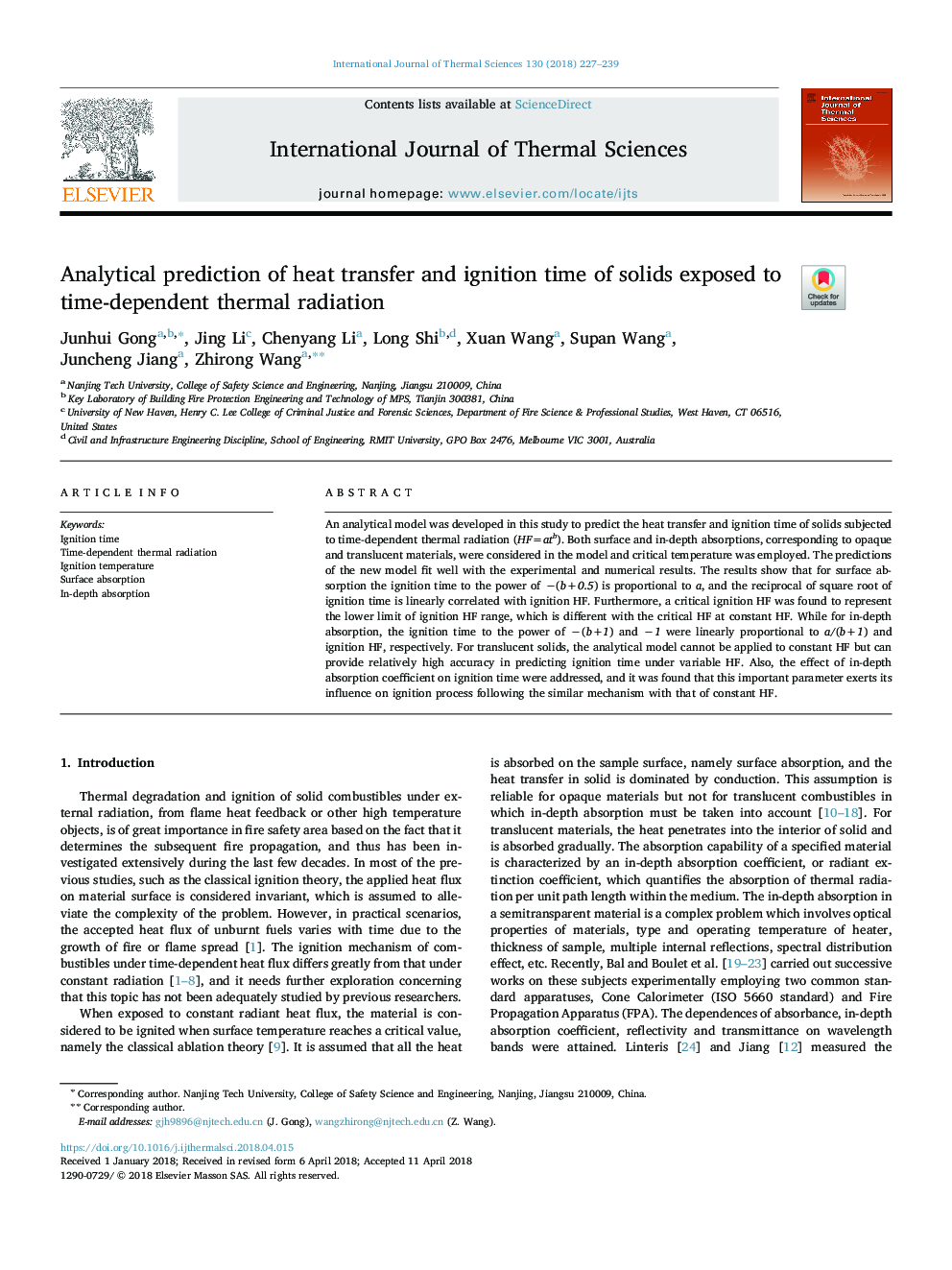| Article ID | Journal | Published Year | Pages | File Type |
|---|---|---|---|---|
| 7060653 | International Journal of Thermal Sciences | 2018 | 13 Pages |
Abstract
An analytical model was developed in this study to predict the heat transfer and ignition time of solids subjected to time-dependent thermal radiation (HF=atb). Both surface and in-depth absorptions, corresponding to opaque and translucent materials, were considered in the model and critical temperature was employed. The predictions of the new model fit well with the experimental and numerical results. The results show that for surface absorption the ignition time to the power of â(b+0.5) is proportional to a, and the reciprocal of square root of ignition time is linearly correlated with ignition HF. Furthermore, a critical ignition HF was found to represent the lower limit of ignition HF range, which is different with the critical HF at constant HF. While for in-depth absorption, the ignition time to the power of â(b+1) and â1 were linearly proportional to a/(b+1) and ignition HF, respectively. For translucent solids, the analytical model cannot be applied to constant HF but can provide relatively high accuracy in predicting ignition time under variable HF. Also, the effect of in-depth absorption coefficient on ignition time were addressed, and it was found that this important parameter exerts its influence on ignition process following the similar mechanism with that of constant HF.
Related Topics
Physical Sciences and Engineering
Chemical Engineering
Fluid Flow and Transfer Processes
Authors
Junhui Gong, Jing Li, Chenyang Li, Long Shi, Xuan Wang, Supan Wang, Juncheng Jiang, Zhirong Wang,
